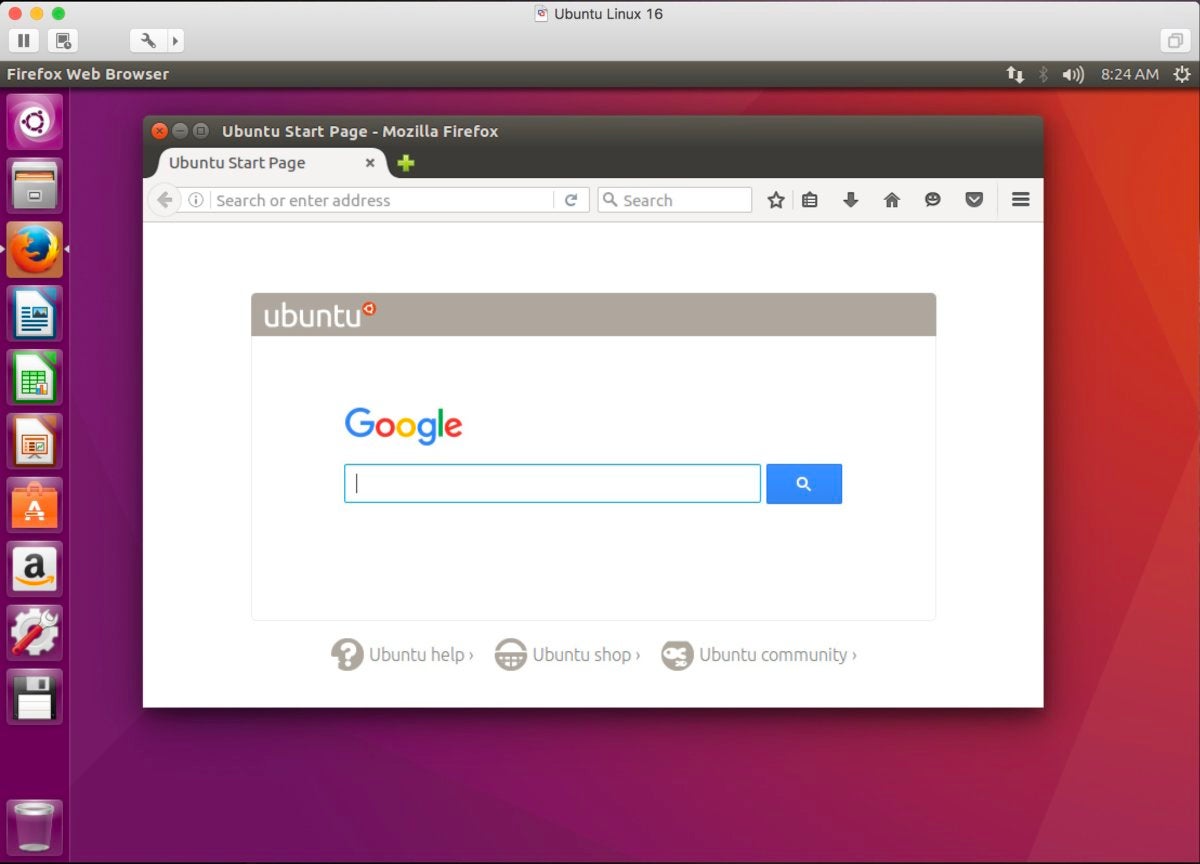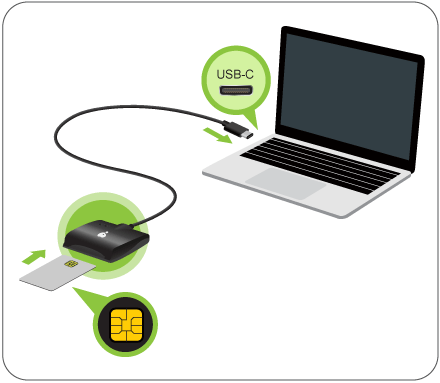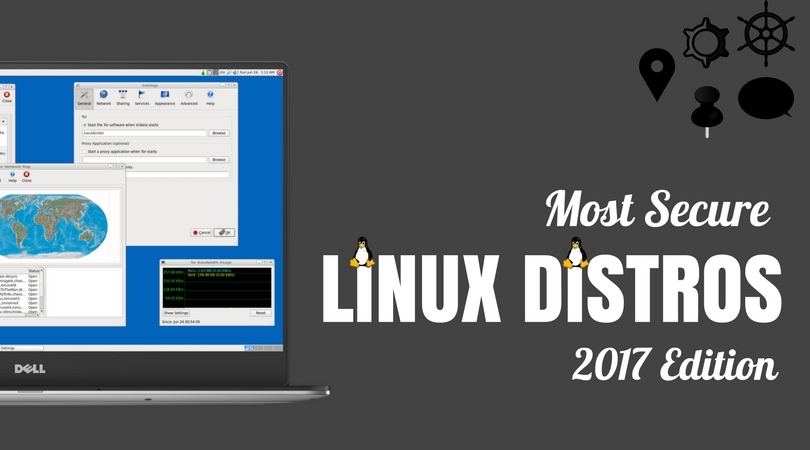Question About Using Trusted End Node Security (tens On Vm For Mac
- Question About Using Trusted End Node Security (tens On Vm For Mac Windows 10
- Question About Using Trusted End Node Security (tens On Vm For Mac Free
Linux is the third most popular computer operating system behind Windows in the number one spot and MacOS in pole position. It's been around for a long time - the first distribution as released in 1991 - and although it hasn't seen the same take-up as the two commercial leaders, that's because people tend to think it's less flexible than the two GUI-focused platforms. But actually, it's that openness that makes it more customisable and flexible than its high-grossing counterparts and is the reason why so many developers and engineers favour it over Windows and Apple's macOS. Another reason it's so liked is due to its open-source nature, any code can be shared and added to, tweaked and developed by other experts, making it a hugely collaborative operating system. This also means it's always evolving and its functionality is consistently improved. Each different version is known as a distribution or 'distro' for short and this is what developers refer to when they explain which iteration is running on their computer.
Security-critical Code in Qubes OS. Below is a list of security-critical (i.e., trusted) code components in Qubes OS. A successful attack against any of these components could compromise the system’s security. Can I run TENS in a virtual machine (VM) like Oracle VirtualBox, VMware, VirtualPC. This really isn't a question for us, since we're not in the business of providing. If the Mac does not boot using the 'C' key or the option key, then boot the. Qubes OS – A reasonably secure operating system. Qubes OS is best described as a Xen distribution running virtual Linux domains. Xen is a very stable and mature bare-metal type 1 hypervisor.This type of virtualization is analogous to what you may be picturing when using a product like VirtualBox with one important difference.
Every distro includes new features and functions, so whereas Windows 10 adds new features as an improvement to Windows 8's functionality, different Linux distros are suited to different uses, so one may be designed for enterprise-grade applications and servers while others for desktop clients, or traditional desktop PCs. It's not an easy thing to learn to use any new operating system - in fact, it can be a relatively daunting prospect - but it's even more so with Linux as it's not as visual as the likes of Windows and Mac OS. But the variety of distros available for Linux means it's not too hard to find a version with a more user-friendly interface. The fact that it's means almost every type of user can find a version tailored to their specific needs, tastes and use cases.
But, in keeping with the benefits of open source, they're all completely free to use and implement at no cost whatsoever. If you're a little nervous about completely jumping ship and going ahead full-force into the world of Linux, you might want to try before you buy, essentially, with a live booting version of the operating system. Many of the versions below can be installed from a USB or CD and they allow you to try the distro before making a final decision (ie., installing on your computer, completely replacing the Windows operating system. If you don't get on with it, you can easily switch back to Windows without seeing any evidence of your trial on your machine - definitely a good idea. Using such a soft installation is also the ideal way to use Linux on a shared computer. When you remove the USB or CD, it will revert to the previously installed operating system, without a trace. But the big question is which distro to choose?
We outline the best distros out there so you can find one that suits you best. Best desktop distros Desktop PCs are where Linux first got started, and it's here that it maintains the largest and most vibrant fanbase. If you're looking to make a change from the two main desktop software providers, these are the best all-purpose distros. Zorin OS is based upon the Ubuntu distribution, meaning it's compatible with everything Ubuntu works with, including all the libraries and repositories used by the Linux distro. Zorin OS it's an increasingly popular way of getting Linux on machines because it features a graphical installation process UI, making it easier for newbies to get up and running with the alternative OS. Some have even compared it to the closest alternative to the Windows OS, that will come as a welcome relief to those a little nervous about jumping ship.

And for those that love a bit of personalisation, Zorin OS also ships with a theme changer that allows you to change some of the colours and styles of icons and the desktop. Elementary OS. Linux has a bit of a reputation for focusing on function over form, and having a basic, unattractive look. While this is undoubtedly true of some distros, some look downright gorgeous. Elementary OS is one such example, combining a macOS-style aesthetic with a chic minimalist approach.
The distro comes with a minimum of pre-installed apps, but also features its own storefront for downloading software. Some of these apps are paid-for, but many are offered for free, or on a pay-what-you-want system. No list of the best Linux distros would be complete without mentioning Arch, widely considered to be the distro of choice for Linux veterans. One of the reason it's so popular, however, is that it's very complex, requiring a large amount of technical know-how to properly set up and configure. It also doesn't give you much to work with. The Arch packages provide the bare bones of the operating system - there isn't even a graphical desktop environment included with it.
You can install any desktop you like over the top of it (along with all sorts of other groovy software and tools) but Arch itself is pared down to the bone. While Linux Mint is actually based on Ubuntu, there are some differences. For starters, Mint's desktop environment is reminiscent of older Windows versions like Windows 7 and Windows XP, while Ubuntu is more Apple-esque. There's also the issue that while Ubuntu is backed by Canonical, Mint is entirely operated and maintained by the community, through individual volunteers, partner companies and corporate sponsors. This means that support for Mint may be slightly less reliable than with other distros.
Question About Using Trusted End Node Security (tens On Vm For Mac Windows 10

If you want to be at the absolute bleeding edge of Linux, then Fedora is the distro for you. New technologies are integrated into the software as soon as possible, resulting in some of the most innovative features of any distro.
It even boasts Linus Torvalds - creator of the Linux kernel - as a user. The downside of this is that support cycles are short - Fedora versions are only supported for one month after the launch of the next-but-one version, with around six months between version launches. The upgrading process is generally painless however, and doesn't require full re-installation. Best enterprise server distros Desktop PCs might be where Linux is most popular, but its use in business servers is one of the main reasons that open source software still makes money. These are the best distros to put at the heart of your datacenter. Red Hat Enterprise Linux. Red Hat Enterprise Linux - or RHEL, for short - is the company's server-based operating system.
While it's offered to developers for free, Red Hat makes its money selling support services and subscriptions to companies that want to implement the software in production environments. As Red Hat's primary product, it's kept regularly updated with new features and security patches. With recent releases in particular, the company has been ramping up support for cloud services, containers and automation.
SUSE Linux Enterprise Server. Rather than corporate-run Linux distributions like RHEL and SLES, Debian is primarily operated by the Linux community. This makes it somewhat more flexible than its business-focused counterparts. While it's also available as a desktop OS, Debian can be used in servers and the fact that it's supported by the community can often make the support structure more valuable, especially for small businesses or those without large IT needs. Best lightweight distros One of the best things about Linux is that it can run on even the oldest and most underpowered of systems.
These distros are so light on resources that you could probably get them running on a toaster if you tried hard enough. TinyCore is one of the smallest distros ever, with the recommended package clocking in at just 16MB. It's pretty much what you'd expect - a barebones distro that includes the absolute minimum needed to get up and running. The recommended version includes a graphical interface, a window manager, and not much else. By default, TinyCore operates like a thin client: it boots entirely into the system's RAM (rather than installing to the hard drive) and while you can install applications, they only last for one session. If you want to enable persistent storage, however, that's an option.
Designed for speed and ease-of-use, one of the main advantages of Puppy Linux is that it can make older computers feel like brand new machines. Its system requirements are incredibly low, meaning that it will run smoothly and quickly even on ancient hardware. Be warned, though - the nature of Puppy Linux's development means that there are even more different variants and offshoots than other distros, which can get confusing. Thankfully, it's so lightweight that you can just jump to another version if you don't like it. Like Tiny Core and Puppy Linux, Lubuntu is built to run quickly and easy on less powerful PCs.
As the name suggests, it's based on Ubuntu, which means that the user experience is a lot slicker than its rivals - although the tradeoff is that it's not quite as efficient. Another benefit is that it's compatible with Ubuntu's software packages, giving users access to a huge repository of applications that can be installed at will. These cover everything from basic office and productivity tools, all the way up to games. Best security distros The privacy and security community is one of the few groups within tech that are as rabidly passionate as the open source community. It makes sense, then, that the two areas would go hand in hand. Here are the best distros for hackers, pen-testers and the terminally paranoid.
Kali Linux has gained a reputation within the cyber security community for being the hacker's OS of choice. Kali comes loaded with more than 300 tools for probing, scanning exploiting and attacking your targets, including password crackers, key-loggers and WiFi scanners. Decidedly not beginner-friendly, the team behind Kali Linux runs online coaching on how to operate it effectively. It's used by ethical hackers, penetration testers and black hats, and was even referenced in TV's Mr.
Robot, a show beloved within the security community for its realism and attention to detail.

In my I sang the praise of the simplicity of Basic Networking. There’s a few more details which even seasoned users of CloudStack may not be aware of:. Security group rules are.
This means active connections enabled by the rules are tracked so that traffic can flow bidirectionally. Although UDP and ICMP are connectionless protocols, their “connection” is defined by the tuple. Stateful connection also has the somewhat surprising property that if you remove a rule, the existing connections enabled by rule continue to exist, until closed by either end of the connection.
This is identical to AWS security groups behavior. Security group rules can allow access to VMs from other accounts: Suppose you have a shared monitoring service across accounts. The VMs in the monitoring service can belong to the cloud operator. Other tenants can allow access to them:. authorize securitygroupingress securitygroupname=web account=operator usersecuritygrouplist=nagios,cacti protocol=tcp startport=12489. There is always a default security group: Just like EC2-classic, if you don’t place a VM in a security group, it gets placed in the default security group. Each account has its own default security group.
Security group rules work between availability zones: Security groups in an account are common across a region (multiple availability zones). Therefore, if the availability zones are routable (without NAT) to each other then the security groups work just as well between zones. This is similar to AWS EC2-classic security groups.
Subnets are shared between accounts / VMs in a security group may not share a subnet. Although tenants cannot create or choose subnets in Basic networking, their VMs are placed in subnets (“Pods”) predefined by the cloud operator. The table below shows a sample of VMs belonging to two accounts spread between two subnets. is silently dropped. Broadcast and multicast traffic is dropped at the VM egress to avoid attacks on other tenants in the same subnet.
VMs cannot spoof their mac address either: unicast traffic with the wrong source mac is dropped as well. Anti-spoofing protection. VMs cannot spoof their mac address. VMs cannot send ARP responses for IP addresses they do not own.
Question About Using Trusted End Node Security (tens On Vm For Mac Free
VMs cannot spoof DHCP server responses either. ARP is allowed only when the source MAC matches the VM’s assigned MAC. DHCP and DNS queries to the pod-local DHCP server are always allowed. If you run Wireshark/tcpdump within the VM you cannot see your neighbors traffic even though your NIC is set to promiscuous mode. Multiple IP addresses per VM: Once the VM is started you can request an additional IP for the VM (use the addIptoNic API). Live migration of the VM works as expected: When the operator migrates a VM, the security group rules move with the VM. Existing connections may get dropped during the migration.
High Availability: As with any CloudStack installation, High Availability (aka Fast Restart) works as expected. When the VM moves to a different host, the rules move along with the VM. Effortless scaling: The largest CloudStack clouds (tens of thousands of nodes) use Basic networking.
Just add more management servers. Available LBaaS: You can use a Citrix Netscaler to as well (GSLB).
Available Static NAT: You can use a Citrix Netscaler to from a “public” IP to the VM IP. There are limitations however when you use Basic Zone:. Security groups function is only available on Citrix XenServer and KVM. You can’t mix Advanced Networks and Basic Networks in the same availability zone, unlike AWS EC2. You can’t add/remove security groups to a VM after it has been created. This is the same as EC2-classic. No VPN functions are available.
The best way to deploy your Basic Zone is to engineer your physical network according to the same principles as web-scale operators.